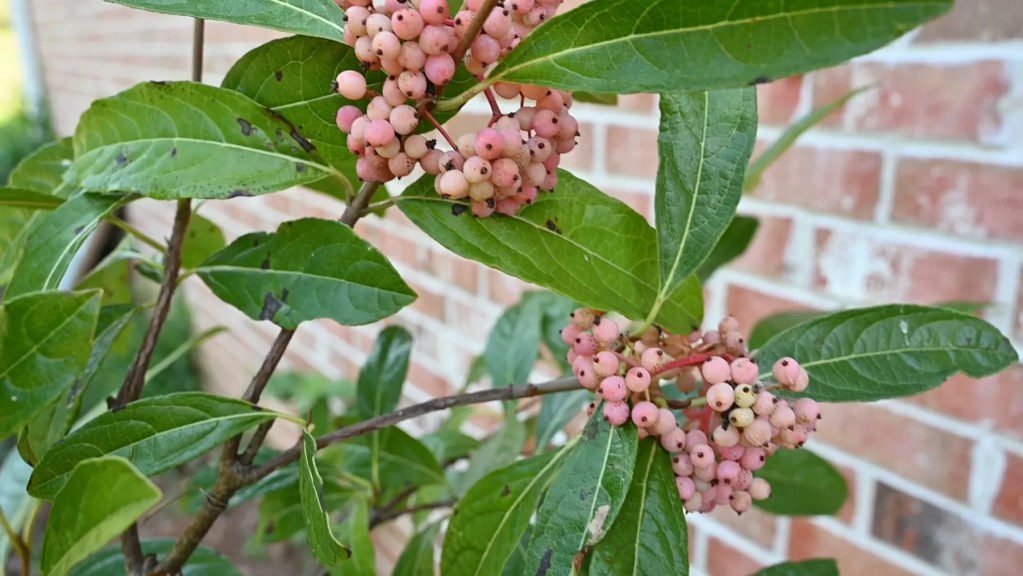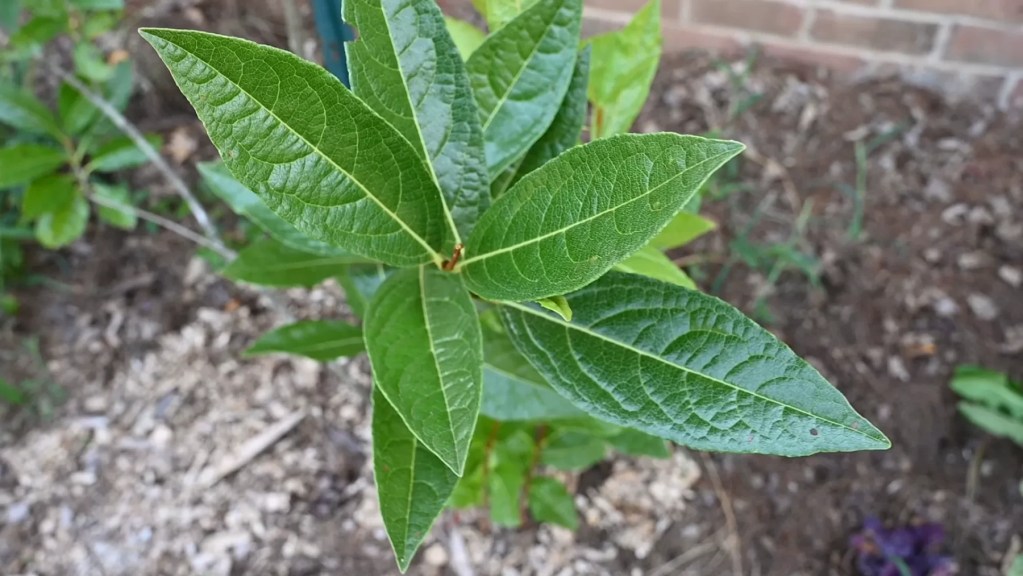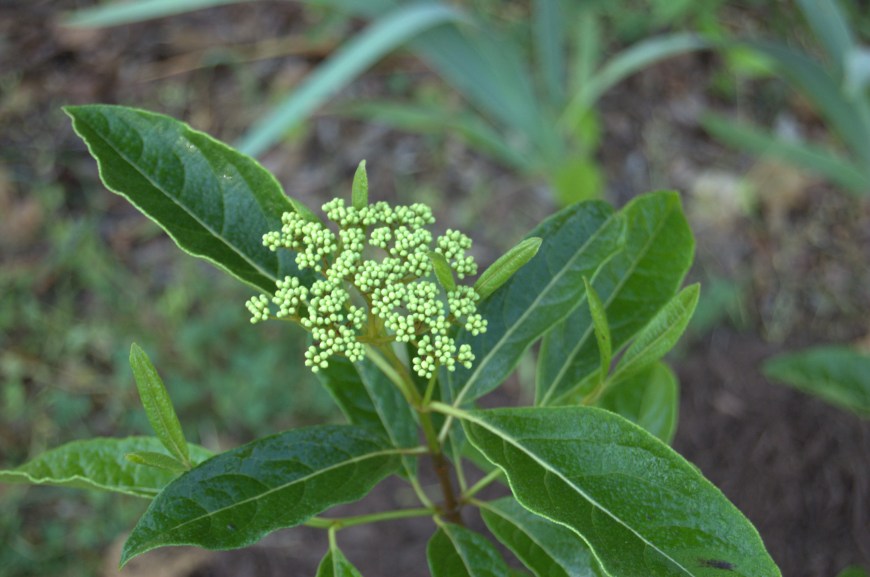If you’re looking for a versatile, wildlife-friendly shrub with four-season appeal, Viburnum nudum absolutely deserves a spot in your garden. Commonly called possumhaw viburnum, raisin tree, or witherod viburnum, this native plant brings glossy green leaves, colorful fall foliage, and clusters of berries that both birds and pollinators love.
Best of all, viburnums are great a native replacement for many of the invasive shrubs that have taken over landscapes across the eastern United States.
Why Grow Viburnum nudum?
Native roots: Viburnum nudum is native to much of the eastern U.S., thriving in growing zones 5 through 9. In Tennessee (zone 7), it performs beautifully.
Ornamental value: Its glossy green leaves shine through summer, then transform into brilliant shades of red and purple in the fall.
Berries for birds and wildlife: Clusters of berries shift from pink (unripe) to deep blue (ripe). Birds flock to them, and while they’re technically edible for people, they’re mainly enjoyed by wildlife. I don’t think you get enough fruit to deal with the seeds although I could see you potentially making a jam from the berries. These berries are also useful for gardeners who want to propagate new plants from seed.
Pollinator support: Viburnums serve as larval host plants for several pollinator species, making them an ecological upgrade over invasive shrubs.

A Native Replacement for Invasives
Many landscapes are crowded with aggressive non-natives like privet, burning bush, Amur honeysuckle, or Bradford pear. Viburnum nudum can step in as a beautiful, ecologically valuable substitute. Its dense growth makes it suitable for hedgerows or screening, while still providing seasonal interest.
| Invasive Plant | Why It’s a Problem | How Viburnum nudum Helps |
|---|---|---|
| Privet (Ligustrum spp.) | Extremely invasive in the Southeast; forms dense thickets that choke out native plants. | Viburnum nudum provides similar hedging ability, dense growth, and wildlife support without crowding out natives. |
| Burning Bush (Euonymus alatus) | Popular for red fall color but highly invasive; spreads aggressively by seed. | Viburnum nudum offers brilliant red-purple fall foliage with none of the invasiveness. |
| Amur Honeysuckle (Lonicera maackii) | Outcompetes native understory plants; berries have low nutritional value for wildlife. | Viburnum nudum produces nutrient-rich berries that birds actually rely on. |
| Bradford Pear (Pyrus calleryana) | Weak branching leads to storm damage; invasive seedlings spread widely. | Viburnum nudum gives strong fall color and spring blooms without the ecological downsides. |

Growing Conditions for Viburnum nudum
Here’s a quick guide to help you site and care for your viburnum:
| Feature | Growing Requirement |
|---|---|
| USDA Hardiness Zones | 5–9 |
| Mature Size | 6–12 ft tall, 6–10 ft wide |
| Sunlight | Full sun to partial shade (best berry and flower production in full sun) |
| Soil | Moist, well-drained; tolerates clay but prefers rich, loamy soils |
| Water Needs | Moderate; consistent moisture improves fruiting |
| Foliage | Glossy green leaves, turning red-purple in fall |
| Flowers | Small white blooms in clusters, spring to early summer |
| Fruit | Pink to blue berries, late summer into fall |
Viburnum nudum Varieties
- ‘Brandywine’ – Known for heavy berry production and vibrant fall color.
- ‘Winterthur’ – A compact cultivar with excellent ornamental features (though not widely propagated).
- Straight species – Ideal for naturalized areas, hedges, or wildlife gardens.
For the best berry production, plant at least two different varieties near each other for cross-pollination.
Propagation and Care
- From Seed: The berries can be collected, cleaned, and cold stratified before sowing. This method produces new plants genetically closer to the straight species. The seeds benefit from a short period of warm starification prior to the cold stratification.
- From Cuttings or Division: If you have a non-patented plant, viburnums propagate well vegetatively. Some, like arrowwood viburnum, spread by suckering and can be divided. Viburnum nudum may also sucker lightly, offering opportunities for division.
- Maintenance: Watch for minor fungal leaf spotting, especially in damp springs. Removing fallen leaves in autumn reduces fungal carryover.

Why Plant Viburnum nudum in Your Garden?
This shrub checks all the boxes:
- Beauty: Glossy leaves, white blooms, fall color, and colorful berries.
- Wildlife Value: Supports birds, pollinators, and beneficial insects.
- Ecological Benefit: Provides a sustainable alternative to invasive shrubs.
- Versatility: Works as a hedge, specimen, or naturalized planting.
If you’re searching for a shrub that offers both ornamental appeal and ecological value, Viburnum nudum is an outstanding choice. By planting one, you’re not just beautifying your garden, you’re also contributing to a healthier ecosystem.
Completely Random Garden Photos
There’s no rhyme or reason to the pictures in this post. It’s all random and just for fun! Or does saying that give it a theme or a reason? Hmm…. Verbena bonairensis beginning the process of reseeding in the self-sowing garden. Celosia in the reseeding…
A Friday Photo: Red Knockout Rose with Morning Dew
Knockout roses are great additions to any garden. They are more resistant to pests and diseases and continue to provide blooms throughout the summer. This rose is planted in a corner bed between our front sidewalk and the driveway. Gallery of Other Roses from Our…
Time For A Few Herb Cuttings!
It’s time for a few herb cuttings! Surely you didn’t think it would be too long before the plant propagation posts began again? The warm weather is here – early – but the plants have responded and it’s time to take some stem tip cuttings. …
Around the Garden Shed – the Rest of the Plantings!
Yesterday’s post had many of the colorful plants I planted around the garden shed today’s post may be less colorful but hopefully still interesting! First let’s start off with a small stepping stone pathway. I bought some cheap 12″x12″ stepping stones to lay down for…
Three Gardening Books I’d Like for Christmas
Before every Christmas season begins I am asked by various family members “What do you you want for Christmas?” Of course sometimes it’s phrased more like “Get me your Christmas list by X Date!” Does this happen to you too? As an avid gardener and…
Vegetable Garden Layout with Raised Beds for 2011
Another year comes and guess what – I make more changes to my vegetable garden layout! I haven’t done anything yet but below you’ll see what I intend to change from last year’s vegetable garden design. This is step one in altering my garden into…
Discover more from Growing The Home Garden
Subscribe to get the latest posts sent to your email.






